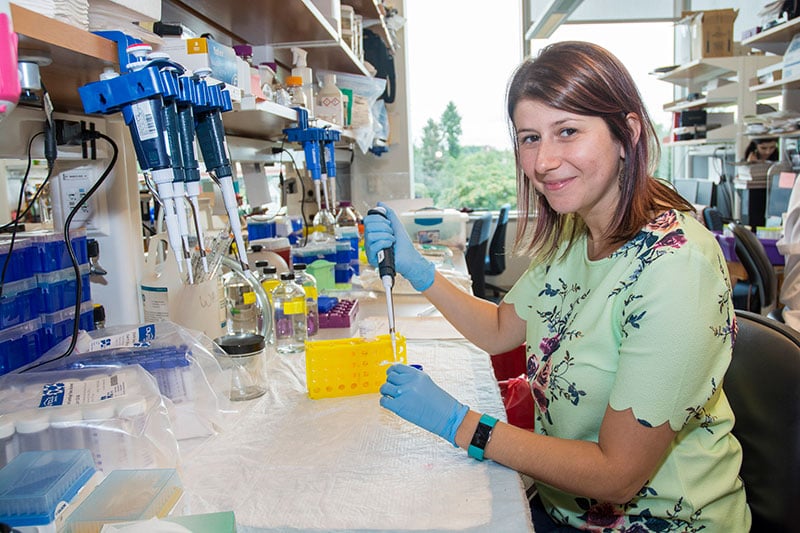Large Animal Models of Genetic Disease
Critical to the development of successful treatments
Large animal models are ideal to evaluate neurologic disease because they have a brain and spinal cord size closer to humans than rodents, a complex immune system and a long lifespan (important for studies in which data is gathered for the same subjects repeatedly over a long period of time). Large animals often recapitulate (have strong similarities to) human neurodegenerative diseases and are ideal to test novel therapeutics, including gene or enzyme replacement therapy, and help predict future response in patients.
Our lab’s focus is on establishing breeding colonies of chosen animal models, characterizing the causative genetic mutations if unknown and conducting natural history studies to understand disease progression. This foundational work will enable us to test novel therapeutics for future application to human patients.
 Tay-Sachs Sheep
Tay-Sachs Sheep
A clinically significant animal model of TSD was first reported in 2010 in Jacob sheep. While a Tay-Sachs mouse model exists, it is largely asymptomatic and is not an experimentally relevant animal model of TSD. Sheep with Tay-Sachs experience a reduction of HexA activity in the brain that is ~6 percent of normal, and TSD sheep develop a myriad of clinical signs. These clinical symptoms include changes in gait and posture, visual deficiencies and muscle weakness. Although no one sheep experiences the exact same progression, all sheep experience neurologic decline. The Tay-Sachs sheep model has been critical to our lab’s research. The sheep are the most authentic animal model of TSD available for laboratory testing. Because their brain size and complexity approaches that of the human brain, these studies have been crucial in developing a therapeutic strategy that will have meaningful impacts on human disease.
Critical to our research is our collaboration with Tufts Cummings School of Veterinary Medicine. Our sheep and goats are housed at Tufts and expertly cared for by livestock specialists and veterinary and animal care staff, who also partner with us in the development of new large animal models of disease.
 CRISPR
CRISPR
Our lab uses CRISPR mediated genome editing to develop new large animal models of disease. CRISPR (which stands for “clustered regularly interspaced short palindromic repeats”) is a powerful technique that utilizes naturally occurring bacterial defenses to target specific segments of the genome with a high degree of accuracy and efficiency. We are currently working with reproductive specialists at Tufts University as well as with CRISPR experts here at UMass Chan to develop new models of genetic disease. For most of these rare genetic diseases a clinically useful animal model does not exist. The vast majority of animal models available to study the pathogenesis (development of the disease) and treatment of these debilitating diseases are rodent models. While rodent models have significant advantages with regard to time and logistics, they often fail to adequately represent key features of human disease. In addition, rodents’ extremely small brain size, short lifespan, anatomical differences and lack of appropriate immunogenicity preclude accurate translational assessment of some therapeutic modalities, including different gene-therapy delivery methods. It is critical, then, to utilize techniques such as CRISPR to accelerate therapeutic development to the clinic.